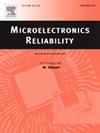An integrated physical model and extant data based approach for fault diagnosis and failure prognosis: Application to a photovoltaic module
IF 1.9
4区 工程技术
Q3 ENGINEERING, ELECTRICAL & ELECTRONIC
引用次数: 0
Abstract
Nowadays, the increasing tendency towards the exploitation of solar energy has yielded many technological advancements. Hybrid approaches are attracting attention worldwide to ensure the comprehensive assessment of photovoltaic modules reliability becoming a crucial issue. The present study is dedicated to the investigation of an innovative approach integrating Bond graph theory, Gaussian mixture models and Similarity-based method for fault detection and remaining useful life prediction. In this context, Bond graphs are exploited first to create a dataset covering diverse operational modes of the system. The identification and evaluation of critical sensors for fault observability is also considered, where the dataset is optimized based on the variance analysis. The Gaussian mixture model with its semi-supervised initialization is then utilized for clustering and fault diagnosis, while remaining useful life estimation is performed using a pairwise similarity technique. Validation results on a photovoltaic panel model demonstrate that the Gaussian mixture model consistently outperforms the classical k-Nearest Neighbors model across all key metrics (accuracy of 0.9396 vs. 0.7577, precision of 0.9192 vs. 0.5570, recall of 0.7849 vs. 0.5628, and F1-score of 0.8666 vs. 0.6707), highlighting its superior performance. The remaining useful lifetime model also achieves high accuracy, with Root Mean Square Error values ranging from 0.0282 to 0.0300, indicating minimal prediction error. Additionally, the R-Squared value of ~0.92 shows that the model explains approximately 92% of the variance in remaining useful lifetime predictions, underscoring its strong predictive capability. The results demonstrate the practical effectiveness of the proposed framework for both single and multiple faults. However, some limitations are noted, such as the exclusion of the transition phase in training data and the reliance on controlled conditions. The outcomes of this work are expected to provide valuable insights into the implementation of efficient hybrid frameworks, contributing to the sustainable development of solar energy.
基于物理模型和现有数据的集成故障诊断和预测方法:在光伏组件上的应用
如今,开发利用太阳能的趋势日益增长,已经产生了许多技术进步。混合方法越来越受到世界各国的关注,确保光伏组件可靠性的综合评估成为一个至关重要的问题。本研究旨在探讨结合键图理论、高斯混合模型和基于相似度的方法进行故障检测和剩余使用寿命预测的创新方法。在这种情况下,首先利用Bond图来创建涵盖系统不同操作模式的数据集。同时考虑了故障可观测性关键传感器的识别与评估,并基于方差分析对数据集进行了优化。然后利用半监督初始化的高斯混合模型进行聚类和故障诊断,同时使用两两相似度技术进行剩余使用寿命估计。光伏板模型的验证结果表明,高斯混合模型在所有关键指标上(准确率为0.9396 vs. 0.7577,精度为0.9192 vs. 0.5570,召回率为0.7849 vs. 0.5628, f1分数为0.8666 vs. 0.6707)均优于经典k-近邻模型,突出了其优越的性能。剩余使用寿命模型也达到了较高的精度,其均方根误差值在0.0282 ~ 0.0300之间,表明预测误差最小。此外,r平方值为~0.92表明该模型解释了剩余有用寿命预测中约92%的方差,强调了其强大的预测能力。结果表明,该框架对单个故障和多个故障都具有实际的有效性。然而,注意到一些局限性,例如排除训练数据中的过渡阶段以及依赖于受控条件。这项工作的结果有望为高效混合框架的实施提供有价值的见解,有助于太阳能的可持续发展。
本文章由计算机程序翻译,如有差异,请以英文原文为准。
求助全文
约1分钟内获得全文
求助全文
来源期刊

Microelectronics Reliability
工程技术-工程:电子与电气
CiteScore
3.30
自引率
12.50%
发文量
342
审稿时长
68 days
期刊介绍:
Microelectronics Reliability, is dedicated to disseminating the latest research results and related information on the reliability of microelectronic devices, circuits and systems, from materials, process and manufacturing, to design, testing and operation. The coverage of the journal includes the following topics: measurement, understanding and analysis; evaluation and prediction; modelling and simulation; methodologies and mitigation. Papers which combine reliability with other important areas of microelectronics engineering, such as design, fabrication, integration, testing, and field operation will also be welcome, and practical papers reporting case studies in the field and specific application domains are particularly encouraged.
Most accepted papers will be published as Research Papers, describing significant advances and completed work. Papers reviewing important developing topics of general interest may be accepted for publication as Review Papers. Urgent communications of a more preliminary nature and short reports on completed practical work of current interest may be considered for publication as Research Notes. All contributions are subject to peer review by leading experts in the field.
 求助内容:
求助内容: 应助结果提醒方式:
应助结果提醒方式:


